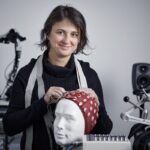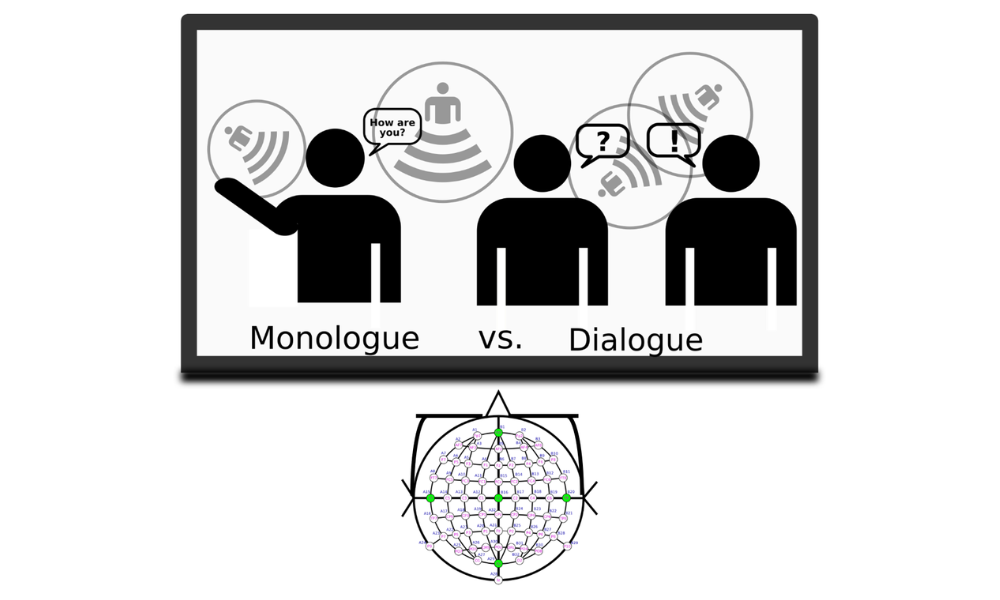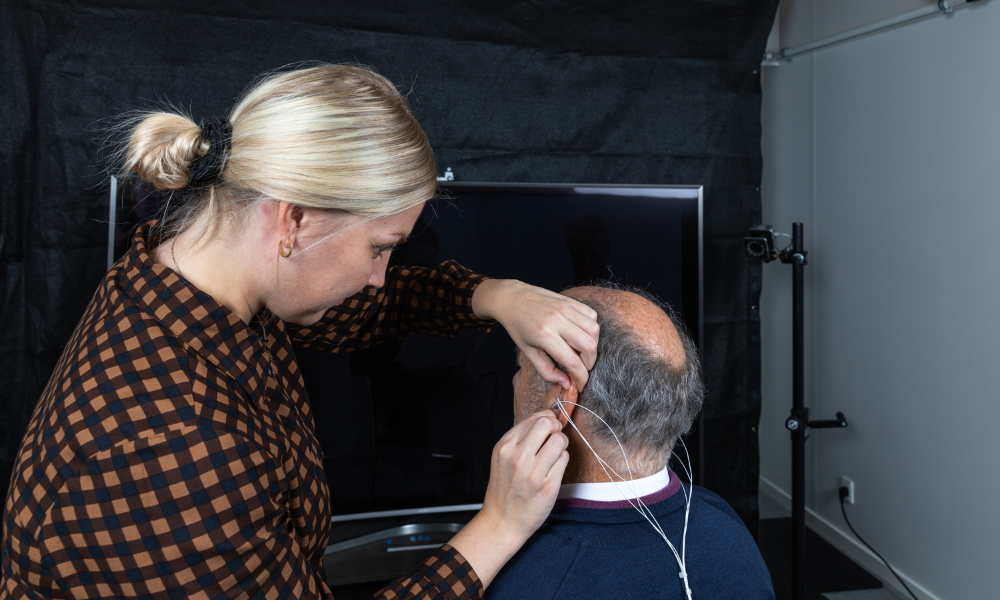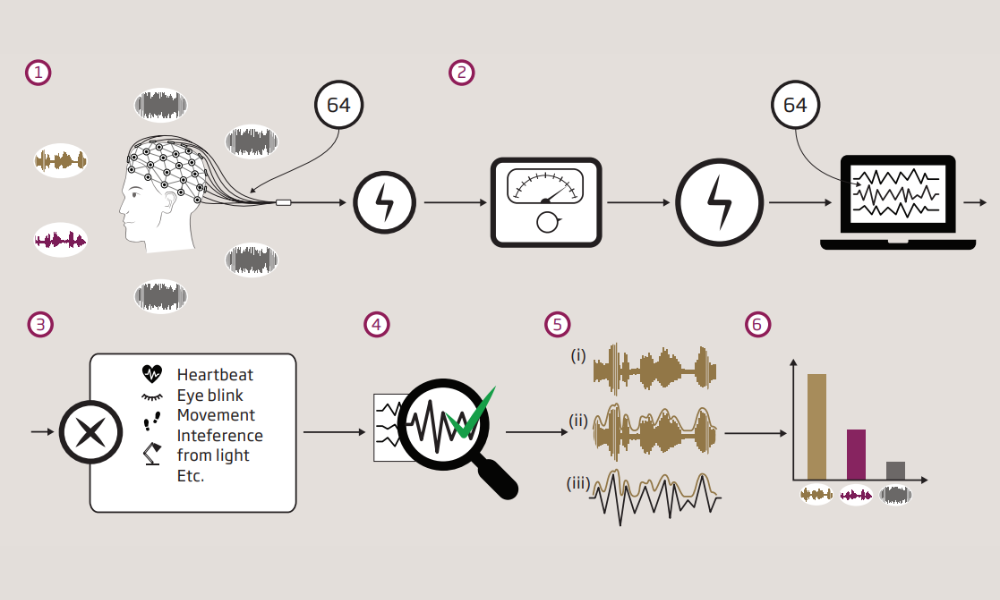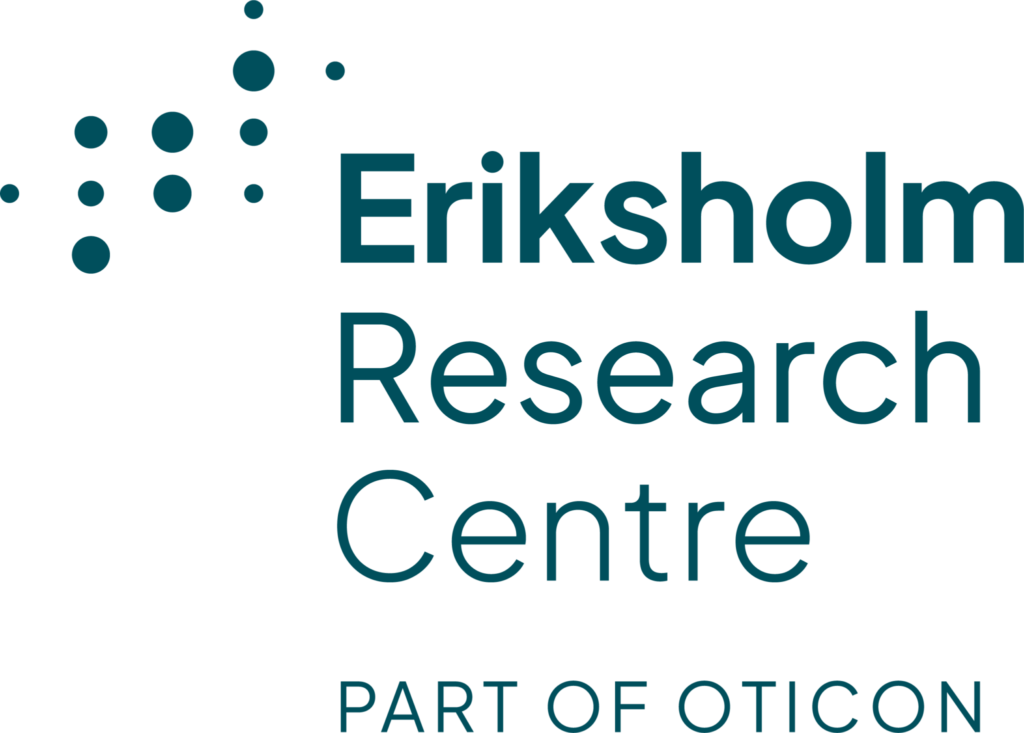Introduction
Speech intelligibility describes how well listeners can understand and repeat back speech items, usually short sentences in background noise. Restoring speech intelligibility is one of the main purposes of hearing aids, but its measurement is somewhat tedious and can be strongly affected by the listener’s cognitive abilities and motivation, whereas some groups (e.g., infants) cannot be measured at all. Recently, methods for assessing speech understanding by means of electroencephalography (EEG) have emerged, allowing to investigate how strongly speech versus noise is represented in brain activity and how different hearing-aid settings modulate this strength.
Funded by the William Demant Foundation
Aims
The aim of the project is to connect EEG-based measures of speech understanding to classical measures – namely, to predict a listener’s speech intelligibility score from traditional tests using EEG-based measurements. A particular focus will be on different groups of listeners in terms of age and hearing ability. Furthermore, we would like to investigate whether EEG needs to be measured on the whole scalp or whether in-ear electrodes are sufficient. EEG-based speech intelligibility measures could then serve as a new tool for evaluating hearing-aid benefits and potentially replace traditional clinical speech testing (even for infants).
A speech signal that a person attends to is represented in their brain activity, which can be measured using EEG (left panel). We explore ways to predict individual listeners’ speech intelligibility by comparing EEG measures and various speech-signal features
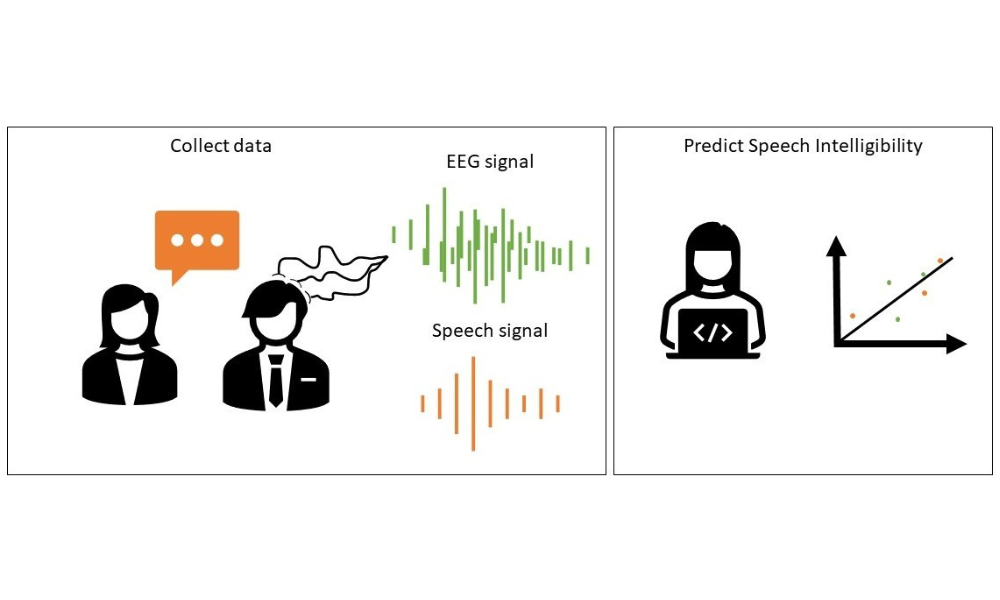
Methodology
Different groups of listeners who vary in age and hearing ability will be tested with a traditional clinical speech test. Brain activity in response to longer but similar speech and noise signals as used in the speech test will be measured in the same listeners using EEG. The EEG data will be analyzed with respect to various acoustic and phonetic characteristics of the presented speech signals to assess how strongly the brain activity is connected to the speech. Finally, the clinical speech-intelligibility scores and their EEG-based counterparts will be compared to assess the validity of predicting speech intelligibility from EEG alone.



